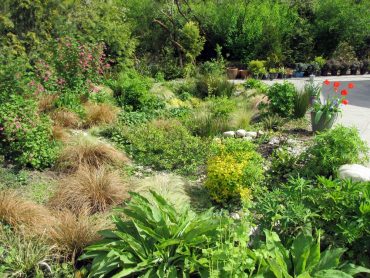
Rain gardens are not only a practical way to address rainwater runoff on a property but also a beautiful addition to the garden. Luckily for local gardeners, they don’t have to figure out the intricacies of a rain garden on their own — thanks to the Rain Garden Mentors program offered by Washington State University’s Kitsap Co-Op Extension. The mentors are volunteers trained by Extension staff to help homeowners evaluate their properties for the viability of rain gardens, whose purpose is to infiltrate rainwater runoff from impermeable surfaces.
Three of the rain garden mentors — Ellen Gunderson, Cheryl Bosley and Judy Cole-Martin — live on Bainbridge Island and have been assisting homeowners since 2010. Not only have they become very knowledgeable about the planning process, they have developed helpful guidelines for homeowners.
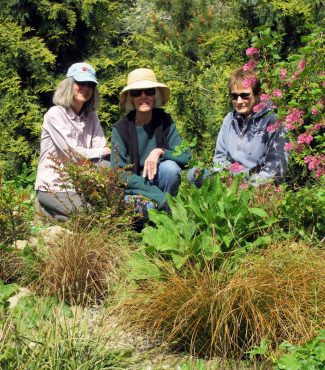
In the past year or two, Gunderson and Bosley have had the opportunity to apply all their knowledge to projects on their own properties. The rain gardens they have installed to handle rainwater from their own homes and driveways have beautified their landscapes while allowing water to gently seep into the soil.
The Bosley Rain Garden
Bosley and her husband, Grover, have been building a new home on sloping terrain, a challenging site that collects water not only from their own property but also from properties located uphill. She started out by designing a rain garden on a level spot just below the driveway to handle the runoff from the new garage as well as any water coming down from the hillside and drive. The driveway was built to slope toward the rain garden for maximum water capture.
For a total area of 2,340 square feet of impervious surface, Bosley chose to make a rain garden with a bottom infiltration area of 456 square feet. An infiltration test showed that the soil was well draining, so the existing soil could be used after being amended with several yards of compost.
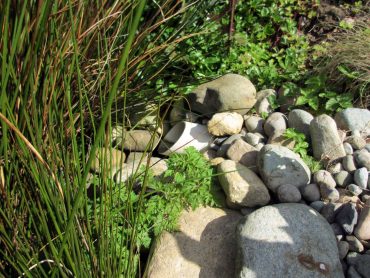
The water from the garage downspouts was tight-lined to a river-rock lined inflow. The generous ponding area has been able to handle all of the runoff from the past two wet winters. There is a conveniently situated outflow drain just below the rain garden that can handle any extreme rain events.
Bosley’s rain garden started out modestly, with many of the plants being small native starts purchased from the Kitsap Conservation District. Today, the garden is lush, beautiful and well-filled-in. The inclusion of newly planted trees (Pinus contorta, Thuja plicata, Thuja plicata ‘Green Giant’ and Pinus thunbergii) within a few feet of the rain garden allowed for a smaller total infiltration area.
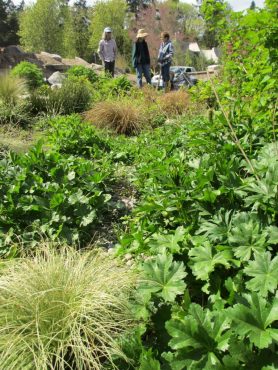
In zone 1, the bottom of the garden that floods and dries repeatedly, Bosley planted moisture-loving sedges, rushes, shrubs and perennials that can also handle the drier summers (see the sidebar for a plant list). Zone 2, the transitional zone between the bottom and upper portions of the garden, supports plants that can handle some flooding, like Echinacea purpurea, Polystichum munitum, Symphoricarpos albus and Spiraea japonica ”Goldmound.’ Vaccinium ovatum, Ribes sanguineum and others have done well in zone 3, the upper perimeter of the garden.
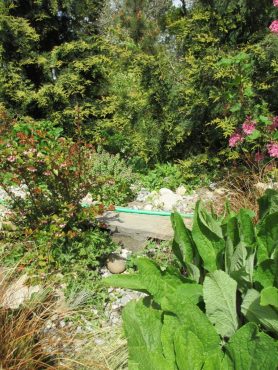
Because of the many native plants, the stormwater bioretention system supports birds, insects, amphibians and other critters. Some ornamental plants fill in to provide interest over all the seasons. Unconcerned with what the books say, many of the plants have started to colonize several of the garden’s zones, seeding around and spreading — the compost-rich soil grows some amazing flowers. In time, some of the shrubby plantings may outgrow their space but the resident deer are doing a good job of pruning the willows and dogwoods. In this case, the deer may become welcome visitors.
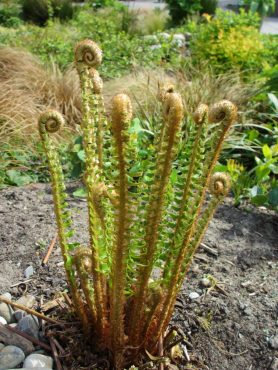
The Bosleys are now building the second rain garden above the driveway to collect the runoff from their new home. The use of large boulders to help retain the sloping terrain will create a truly exciting feature in their front yard.
This area of the property required the import of an appropriate soil/compost mix to allow for necessary infiltration. Well-placed Himalayan birch trees anchor the boulders in the landscape and create a lovely focal area of the garden. A retaining wall and a curtain drain will serve to support the slope just below the second rain garden and handle any excess seepage from the hillside.
Bosley has found the city of Bainbridge planning department to be very encouraging in using rain gardens to handle the runoff from their home- building project.
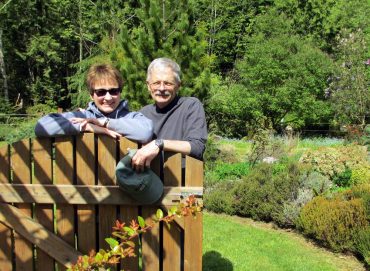
The Gunderson Rain Garden
Gunderson and her husband, Ken, struggled with a failing drainage system, which resulted in water collecting in the crawl spaces under their home. Rather than embark on an impossible journey of finding where the system was failing, they decided to disconnect the downspouts from the drainpipes and lead the runoff from the roof to a rain garden along the driveway.
A pipe leads the water from the downspouts to a trench lined with weed cloth and river rock, spilling onto a rock-lined inflow. Gunderson designed two connected depressions for the rain garden and has found that the first one has handled all of the runoff even during the biggest rainstorms. Any overflow will have a chance to infiltrate in the second cell, after which the water can spill out into the rest of the garden.
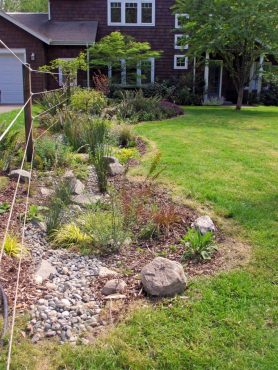
The rain garden looks well settled after just one year and is beautiful along the entry to the home.
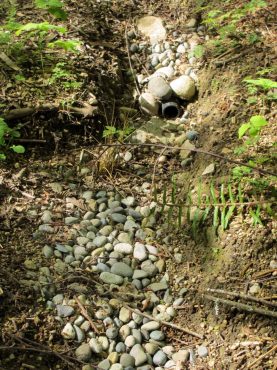
The remainder of the home’s roof runoff is handled by a cobble-lined depression in the forest. The downspouts are connected to a solid pipe and lead to this simple rain garden.
The Gundersons have also included a dry well to filter the water from their water softener regeneration system to avoid releasing salts into the forest soil by the home.
Getting Assistance
Bosley, Gunderson and Cole-Martin have plenty of experience advising homeowners from first-hand work on their own projects, as well as seeing the progress of the many projects they have guided. Take advantage of these resources to improve the ecology of your own slice of the Earth while beautifying your garden.
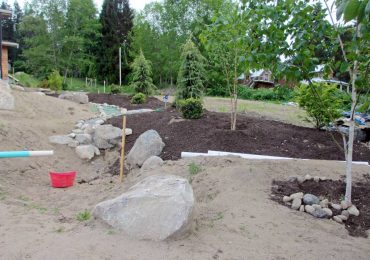
To contact the Bainbridge Island rain garden mentors, email ovenvatneqraf@tznvy.pbz.
Rain garden mentor teams also serve other areas of West Sound. For more information, contact Colleen Miko, Extension horticulture educator, 360-307-4378 or go to kitsap.wsu.edu.
Download a digital copy (pdf) of the Rain Garden Handbook for Western Washington Homeowners at KitsapGov.com/pw/raingardens.pdf
Financial help is available for unincorporated areas of Kitsap County for the development of rain gardens. Residents who qualify for the cost-share program may be reimbursed half of the cost to install a rain garden or other green stormwater solution up to $1,000. To apply contact Teresa Brooks at Kitsap Conservation District, goebbxf@pbafreirjn.arg or 360-204-5529 ext. 124. For more information, go to kitsapcd.org/programs/raingarden-lid.
Remember to always call 811 before you dig to have your utilities located. Avoid unnecessary and dangerous situations.




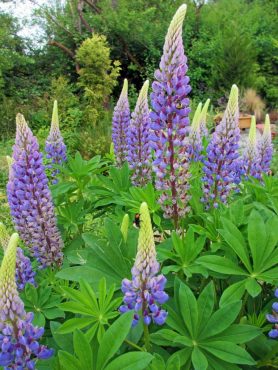
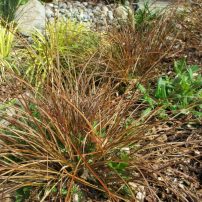
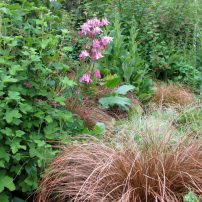
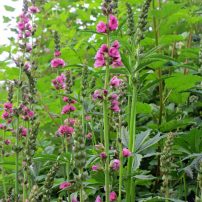
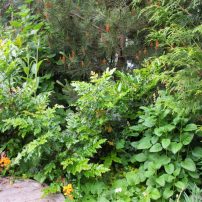
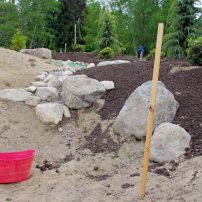
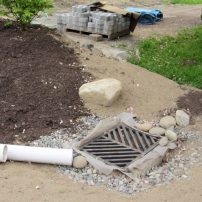
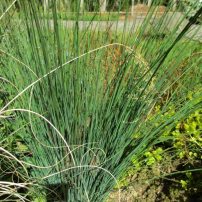
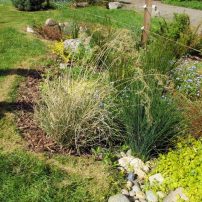
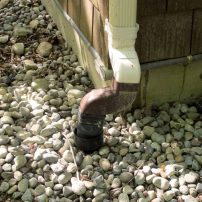
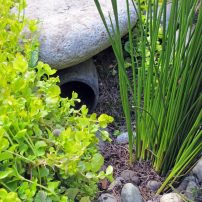
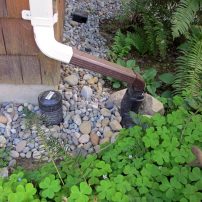
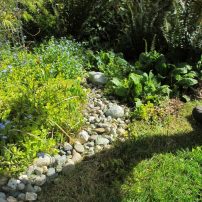
























Comments